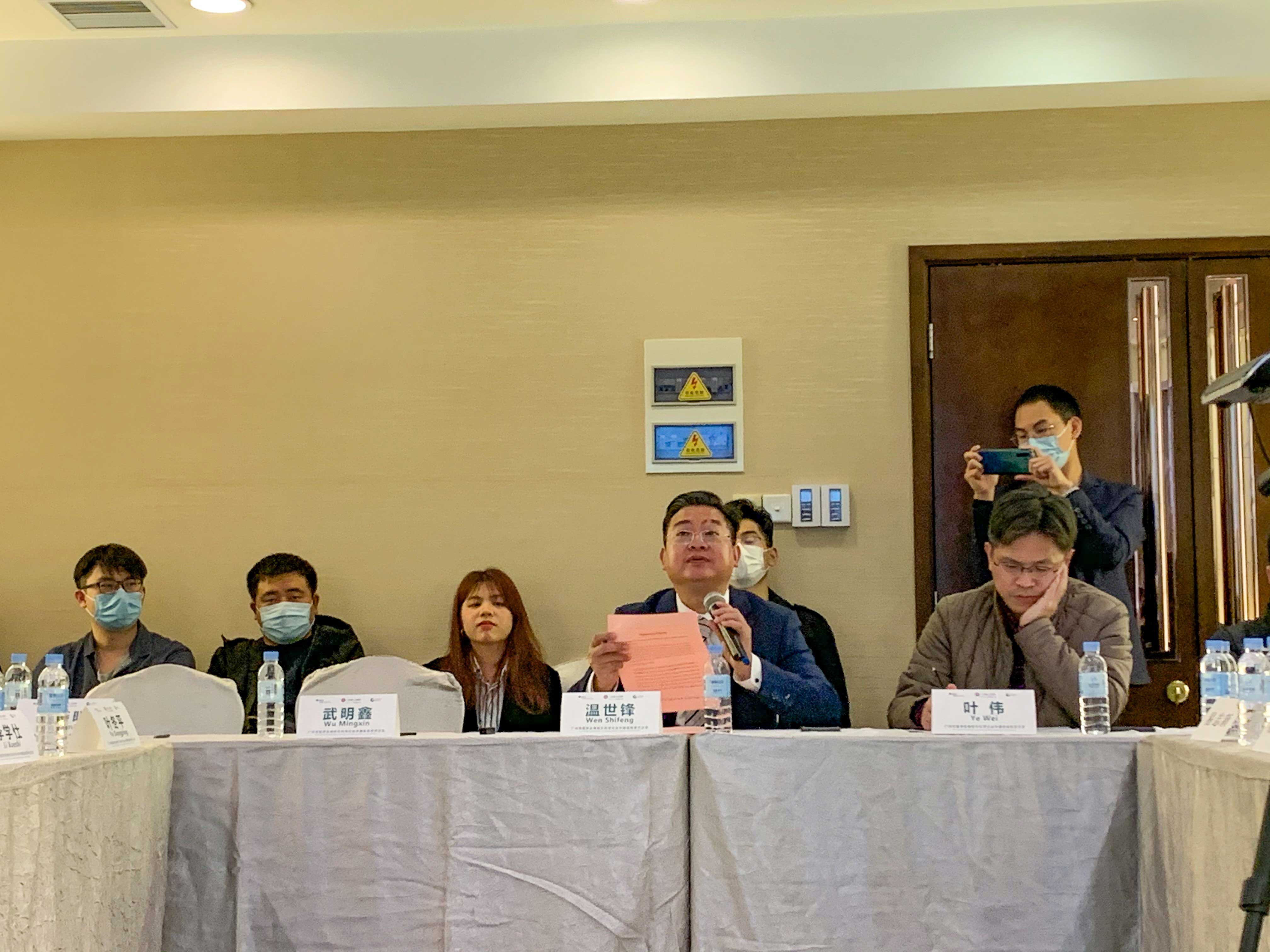-
News & Events

On January 15, Sino-German Academic Salon of Spine Surgery Branch of Guangzhou Medical Association was held at Baiyun Hotel, Guangzhou. Dr. Wen Shifeng, Chief Physician of Department of Spine Surgery of Guangzhou First People's Hospital, attended the meeting as the host and meeting interpreter. Prof. Frank Kandziora, the President of BG Unfallklinik Frankfurt am Main President of Center for Spinal Surgery and Neurotraumatology was invited as the distinguished guest to give a lecture on cervical spine. Dr. Wu Mingxin, Director of Orthopaedics Centre of Huizhou Third People’s Hospital, Dr. Cao Yanming, Director of The Second Department of Orthopaedics of The Second Affiliated Hospital of Guangzhou Medical University (Changgang District Branch), Dr. Ye Wei, Deputy Director of Department of Spine Surgery of Sun Yat-Sen Memorial Hospital, Dr. Zhang Ping, Chief Physician of Department of Spine Surgery of The Third Affiliated Hospital of Guangzhou Medical University, Dr. Ye Dongping, Deputy Chief Physician of Orthopedics Department of Guangzhou Red Cross Hospital, Jinan University, Dr. Li Xueshi, Deputy Chief Physician of Department of Spine Surgery of The First Affiliated Hospital of Jinan University, and other surgeons from Department of Spine Surgery of Guangzhou First People's Hospital together attended the meeting.


A Photo of Prof. Kandziora and the Staff of Gloryren

Academic Salon Venue
At the beginning of the meeting, Dr. Wen Shifeng, Chief Physician of Department of Spine Surgery of Guangzhou First People's Hospital, gave an opening speech and extended a warm welcome to Prof. Kandziora and all the guests. Then he grandly introduced Prof. Kandziora to the audience and wished a great success of this academic salon.
Prof. Kandziora presented a lecture titled Cervical Spine Injuries-Standards for Diagnosis and Treatment . In his lecture, he introduced the classification of different fractures (C1 Fracture, C2 Fracture - Odontoid, C2 Fracture - Axis Ring) and the corresponding treatment options, as well as some surgical tips for us.

Prof. Kandziora firstly introduced us the Gehweiler C1 Fracture Classification and Dickmann Ligamentum Transversum Lesion Classification. He pointed out that for Atlas (C1) fracture as Type 1, 2, 4, 5 and Type 3a, conservative treatment usually is the best option. While for Atlas Fracture Type 3 Subgroups as Type 3b with bony TAL avulsion and minor/unstable dislocation or TAL rupture, the treatment of osteosynthesis + collar or C1/2 fusion would be better.

Dr. Wen Shifeng, Chief Physician, Department of Spine Surgery, Guangzhou First People's Hospital
Then Prof. Kandziora shared a case of a patient with an Atlas fracture (Gehweiler 3b), who recovered well 6 weeks after surgery and regained full cervical mobility, and another six cases that patients suffered from transverse ligament rupture (Dickmann II) and received osteosynthesis treatment. Their clinical results were very favorable and the patients did not report any unstable atlas after the surgery. Comparing C1 osteosynthesis with C1/2 fusion, Prof. Kandziora believed that the advantages of osteosynthesis are obvious, for example, reducing loss of ROM, no bone graft necessity, reducing surgical trauma rate, reducing OR time, reducing complications, ensuring early return to work and generating high subjective satisfaction of patients. He also pointed out that the current “state of the art” that the unstable atlas fractures usually treated with atlantoaxial fusion has been put into heated discussions, and atlas osteosynthesis could be a nice alternative treatment plan.
During the discussion session, Dr. Li Xueshi, Deputy Chief Physician of Department of Spine Surgery of The First Affiliated Hospital of Jinan University, actively discussed with Prof. Kandziora the possible operative approaches. Prof. Kandziora proposed that the transoral approach was feasible but may cause a higher risk of infection, and then he introduced untreaded screw he used for posterior fixation which could avoid nerve damage during fixation.

Dr. Li Xueshi, Deputy Chief Physician, Department of Spine Surgery, The First Affiliated Hospital of Jinan University
When discussing the treatment option for C2 fracture-odontoid, Prof. Kandziora argued that odontoid screw fixation is not a panacea, even though with two screws used in the surgery, screw displacement may be possible and may lead to a surgical failure. He stated that odontoid screw fixation is no longer applicable if patients are with the following conditions, such as fracture line (Grauer C), comminution (Hadley 2), luxation fracture, atypical fractures (Benzel), small caudal fragment and osteoporosis.
Dr. Zheng Weipeng from Guangzhou First People's Hospital shared a case that the patient who have a past history of ankylosing spondylitis was diagnosed with C7 fracture and paraplegia. When discussing the best therapeutic strategy, Prof. Kandziora said that if he were the attending surgeon, he would perform a posterior stabilization with a significant decompression of the spinal canal at the level C5, C6, C7 and would perform a stabilization from C4, C5 to T1, T2 to ensure a long stable construct to fix the cervical spine. Prof. Kandziora also delightedly agreed with Dr. Zheng to perform C5-T1 pedicle screw fixation and C7 laminectomy decompression for the patient. He also was impressed that his Chinese colleagues could perform the pedicle screw fixation in the cervical spine just clinically with no navigation system assisted.

Dr. Zheng Weipeng, Physician, Guangzhou First People's Hospital
Dr. Ye Dongping, Deputy Chief Physician of Orthopedics Department of Guangzhou Red Cross Hospital, Jinan University, shared another case of cervical fracture and an incomplete paraplegia patient. Prof. Kandziora appreciated Dr. Ye’s treatment strategy, thinking its clinical result is very excellent as the post operative imaging showed.

Dr. Ye Dongping, Deputy Chief Physician, Orthopedics Department, Guangzhou Red Cross Hospital, Jinan University
At the end of the meeting, Prof. Kandziora said that he looked forward to visiting Guangzhou First People's Hospital in person, and would be very honored to have another online academic meeting with Dr. Wen Shifeng and his colleagues in the near future.
